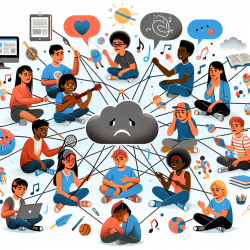Introduction
The mental health crisis among adolescents in the United States has been a growing concern, exacerbated by the COVID-19 pandemic. A recent study titled Emergency Department Visits Involving Mental Health Conditions, Suicide-Related Behaviors, and Drug Overdoses Among Adolescents — United States, January 2019–February 2023 sheds light on this critical issue. This blog aims to help practitioners improve their skills by implementing the outcomes of this research or encouraging them to conduct further research.
Key Findings
The study analyzed data from the National Syndromic Surveillance Program (NSSP) covering approximately 75% of emergency departments (EDs) nationwide. The key findings include:
- By fall 2022, decreases in weekly ED visits were reported among all adolescents for mental health conditions (MHCs) overall, suicide-related behaviors, and drug overdoses compared to fall 2021.
- Weekly ED visits among males were stable, while females showed a decrease in these conditions.
- Opioid-involved overdoses increased during the same period.
- Despite some improvements, poor mental and behavioral health remains a substantial public health problem, particularly among adolescent females.
Implications for Practitioners
Practitioners working with adolescents can leverage these findings to improve outcomes through early identification and trauma-informed interventions. Here are some actionable steps:
1. Early Identification
Screening adolescents for mental health conditions, suicide-related behaviors, and substance use during routine visits can help identify issues early. Utilize standardized tools and questionnaires to ensure consistency and reliability.
2. Trauma-Informed Care
Implementing trauma-informed care practices can significantly impact adolescents' mental health. This involves understanding, recognizing, and responding to the effects of all types of trauma.
3. Comprehensive Prevention Efforts
Expand evidence-based, comprehensive prevention efforts in schools and communities. Programs focusing on social-emotional learning, resilience building, and stress management can be particularly effective.
4. Collaboration with Schools
Collaborate with schools to create supportive environments. Training school staff to recognize signs of mental health issues and providing resources for intervention can make a significant difference.
5. Use of Technology
Leverage telehealth services to provide accessible mental health care. This can be particularly beneficial for adolescents who may face barriers to accessing traditional in-person services.
Encouraging Further Research
While this study provides valuable insights, further research is needed to understand the long-term impacts of the COVID-19 pandemic on adolescent mental health. Practitioners are encouraged to participate in or support research initiatives that explore:
- The effectiveness of different intervention strategies.
- The role of social media and digital platforms in adolescent mental health.
- The impact of family dynamics and socio-economic factors.
Conclusion
The findings from this study highlight the ongoing challenges in adolescent mental health. By implementing early identification, trauma-informed care, and comprehensive prevention efforts, practitioners can make a significant impact. For more detailed information, you can read the original research paper Emergency Department Visits Involving Mental Health Conditions, Suicide-Related Behaviors, and Drug Overdoses Among Adolescents — United States, January 2019–February 2023.










